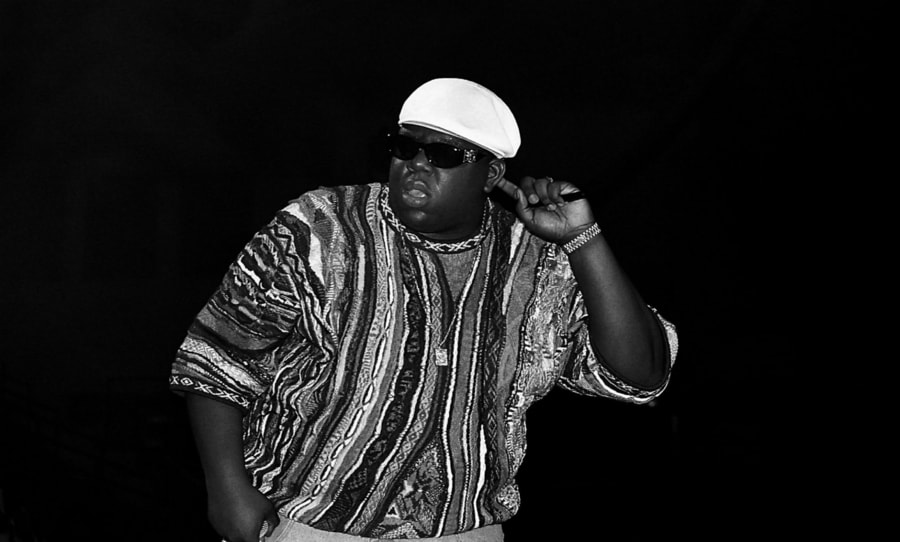


The sound dissolves again to Audio Two’s 1987 “Top Billin',” which marks an eight-year passage of time, and signals rap’s evolution to harder-edged sounds and themes while at the same time representing BK to the fullest. Now the boy’s parents are arguing, with the father threatening to “smack the shit outta” the mom because she “can’t control the goddamn boy” as Wonder Mike and Big Bank Hank rap on and on to the break of dawn. “I see the head!” the proud father roars before the music fades into the Sugar Hill Gang’s 1979 “Rapper’s Delight,” signifying that seven years have passed. “Come on, baby, push! One more time,” the father exhorts as Marvin Gaye’s “Got to Give It Up” plays in the background (on the final album, this song would be changed to Curtis Mayfield’s “Superfly,” released in 1972, the same year as Biggie’s birth). The three-and-a-half-minute intro had me hypnotized: Ominous cinematic strings give way to the sound of a heartbeat and a woman straining to give birth. “You need to hear this Biggie Smalls shit.” I placed the Craig Mack on top of a tall stack of cassettes, popped the one labeled Ready to Die into my Fisher hi-fi, and stepped into a world. “But this is the shit right here,” he added emphatically. “Craig Mack is the first to drop,” he said as he handed over an advance copy of Project Funk da World. One of them slipped off his nylon drawstring backpack and fished out two cassette tapes. One rainy spring afternoon two black teenagers shrouded in baggy Gore-Tex outerwear burst through my office door unannounced, explaining that they were with the Bad Boy street team. We set up shop in our own spot on Lex, in the same building as Steve Rifkind’s Loud Records and William F. The first few issues sold briskly-apparently people from all walks of life enjoyed feeling “ghetto fabulous”-and the staff’s reward was to escape the awkward elevator rides with the suits in the Time-Life skyscraper. Quincy Jones’ harebrained media gamble, to publish a hip-hop culture mag via Time Inc., the home of Fortune and Sports Illustrated, had blown up like the World Trade in 1993.
#NOTORIOUS BIG READY TO DIE 1994 VERSION CD WINDOWS#
Twenty years ago I was a senior editor at VIBE magazine, settling into my comfy new office with wall-to-wall green shag carpet, a sturdy wooden door, and two windows overlooking Lexington Avenue.


 0 kommentar(er)
0 kommentar(er)
